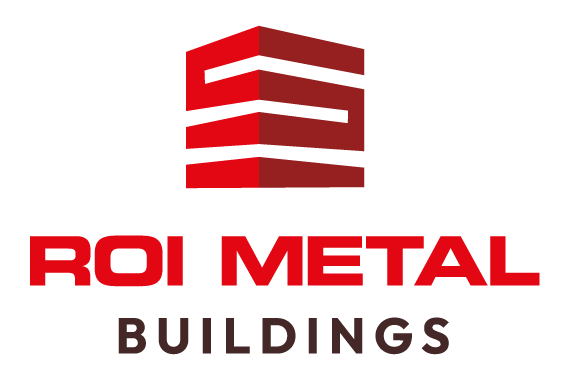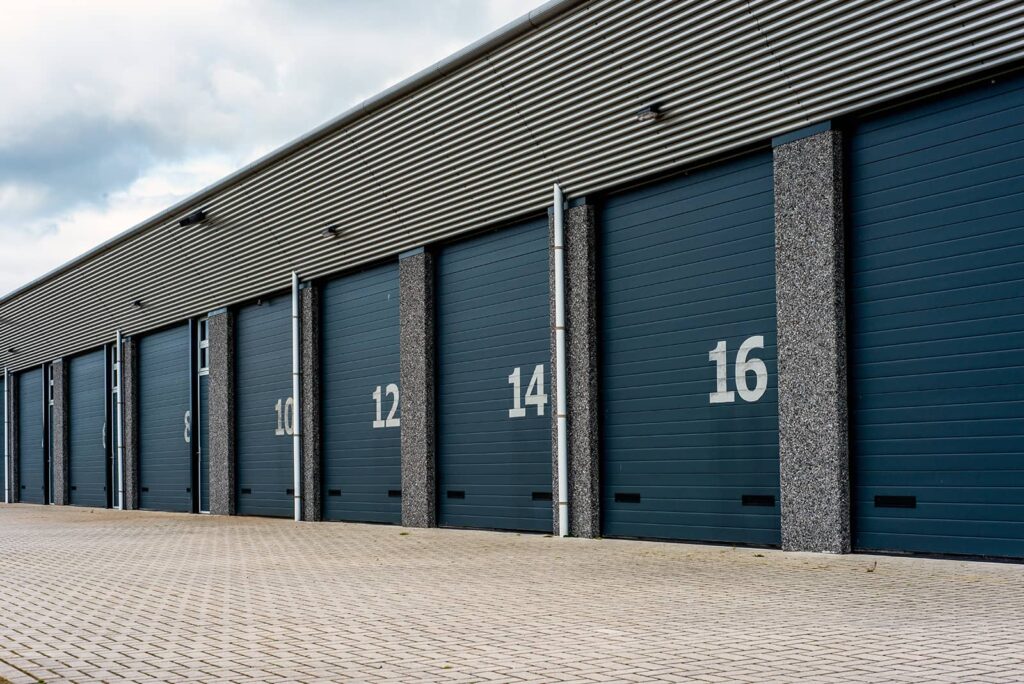When choosing the right type of door for your space, the options can feel overwhelming. We often get asked, “Are roll-up doors better than swinging doors?” You might find yourself torn between the modern convenience of roll-up doors and the classic appeal of swinging doors. Maybe you’re looking for something that maximizes space, or perhaps you want a door that makes a great first impression. Each option has its own unique set of benefits and drawbacks that can affect not only the look of your building but also its overall functionality. Throughout this article, we’ll explore the key features of roll-up and swinging doors to help you decide which one fits your needs best—after all, the right door can make all the difference in how smoothly your operations run!
Roll-up doors are generally considered better than swinging doors in environments where space is limited, and efficiency is crucial. They allow for secure operation while parked at loading docks and minimize hazards in busy areas. However, the choice ultimately depends on specific requirements such as available space, frequency of use, and aesthetic preferences, making it essential to evaluate both options based on your unique situation.
Roll Up Door vs Swing Door: A Comprehensive Comparison
When it comes to making the right choice for your space, understanding the distinctions between roll-up and swinging doors for storage units can lead you to a more informed decision. Roll-up doors, for instance, are designed for efficiency and space management. They roll up vertically, which means they consume no floor space when opened. This feature makes them particularly valuable in areas with limited ceiling height or where maximizing vertical storage is essential. Just imagine a bustling warehouse filled with pallets; having roll-up doors allows forklifts easy access while keeping the pathway clear of door swings, thereby improving workflow and safety.
On the other hand, we have swinging doors that bring their own set of advantages to the table.
These traditional doors are often favored for their aesthetic appeal, effectively complementing various architectural styles. Moreover, swinging doors provide the largest openings for loading and unloading compared to roll-up varieties. However, it’s important to note that when these doors swing open, they can impede movement in cramped spaces or busy docks, making them less practical in environments where every inch counts. Swinging doors require additional space to open and operate, which can be a limitation in tight environments. The frame of swinging doors also plays a crucial role in their functionality and clearance. Proper assembly and installation of the door frame are essential for ensuring security, durability, and smooth operation within the storage unit.
The trade-offs between these two types hinge not just on aesthetics and practicality but also on their inherent features.
While roll-up doors typically boast better security due to solid construction materials and effective locking mechanisms, swinging doors can be vulnerable unless professionally reinforced. If maintaining security is a prime concern for your facility, opting for a roll-up door might be wiser. That said, cost may also factor significantly into your decision: the average price range for roll-up doors typically lies between $1,000 to $5,000 depending on sizing and materials, while swinging doors tend to be budget-friendlier at prices ranging from $200 to $1,500. So if you’re working with tighter budgets, swinging doors might catch your interest. Swinging doors can also facilitate unloading operations in environments where forklifts or pallet jacks are used, making the process more straightforward. Additionally, swinging doors can be constructed with additional cores such as high-density polyethylene (HDPE), polypropylene honeycomb, and stainless steel to enhance durability and performance.
Yet another consideration arises when contemplating maintenance requirements.
Roll-up doors tend to require less frequent maintenance owing to their straightforward design with fewer moving parts, whereas swinging doors need regular checks on hinges and frames—especially in high-traffic areas. This reality adds another layer of expense for business owners who prefer low-maintenance solutions. Lastly, insulation properties may play a role; insulated roll-up doors generally outperform swinging ones regarding thermal efficiency due to higher R-values. Higher insulation translates into lower energy costs and a more comfortable indoor climate during extreme weather conditions. Roll-up doors also provide full access to the cargo area, enhancing loading and unloading efficiency.
Your ideal door type will hinge on numerous factors unique to your specific needs and preferences.
Understanding aspects like space limitations, usability demands, and how much you’re willing to invest upfront versus ongoing maintenance costs—all contribute to making the best choice for your building’s functionality and appearance. As we continue through this guide, we’ll explore distinct benefits that come with one type of door over the other based on user experiences across various settings.
Introduction to Door Types
When it comes to self-storage facilities, the choice of door type plays a pivotal role in determining the overall efficiency, security, and functionality of the storage units. Two of the most prevalent options are roll-up doors and swing doors, each offering distinct features and benefits tailored to different operational needs.
Roll-up doors are renowned for their space efficiency and robust construction. These doors roll vertically into a compact coil above the opening, making them ideal for storage facilities where maximizing usable space is a priority. Their design allows for easy access to storage units without requiring additional clearance space, which is especially valuable in facilities with tight quarters or high-density layouts. The solid build of roll-up doors also contributes to enhanced security, helping to protect the contents inside each storage unit.
On the other hand, swing doors offer maximum opening clearance, making them a preferred choice in environments where large items or equipment need to be moved in and out frequently. Swing doors open outward on hinges, providing a wide, unobstructed entryway that is particularly useful for loading and unloading with forklifts or pallet jacks. This door type is often favored in storage facilities that prioritize quick and easy access, as well as in situations where aesthetics and traditional design are important.
Understanding the unique features and benefits of each door type is essential for facility owners and managers looking to optimize their storage space, improve operational efficiency, and ensure the security of their customers’ belongings. By carefully considering the specific needs of their facility, they can select the door solution that best aligns with their goals for space utilization, security, and overall functionality.
Benefits of Roll-Up Doors
Roll-up doors offer a multitude of advantages, particularly suited for commercial and industrial environments. One of the most significant features is their space-saving design. Unlike traditional swinging doors, roll-up doors coil neatly into themselves when opened, freeing up both floor and wall space within the building. These doors follow a track for smooth operation, which is especially advantageous in tight areas where every square inch counts.
Imagine trying to navigate a bustling warehouse with swinging doors; not only could they intrude into your working area, but they also risk becoming cumbersome obstacles amid heavy foot traffic. Roll-up doors improve loading efficiency and access to the cargo area, making them ideal for the freight and transportation industry.
Space-Saving Design
Their compact nature lends itself perfectly to facilities with limited space, allowing for active workflows without feeling cramped. For businesses that deal with large equipment or vehicles, maximizing usable area is vital. By utilizing roll-up doors compared to traditional trailer doors, operations can flow more smoothly since items can be loaded or unloaded without the need to maneuver around bulky door frames.
Barn doors, with their traditional design and functionality, are another option for businesses. They offer a wide opening for easy loading and unloading of cargo, especially in applications involving forklifts. However, it’s important to consider the benefits and drawbacks of barn doors in various operational contexts, such as loading docks and urban delivery scenarios.
There are also other options for self-storage door types beyond roll-up and swing doors, providing a variety of solutions to meet different space requirements and operational needs.
Ease of Operation
Another key advantage of roll-up doors is their ease of operation. These doors are designed to require minimal effort to open or close, which becomes invaluable in high-traffic areas where frequent access is essential. Compared to sectional garage doors, roll-up doors offer a simpler mechanism that can be more convenient for quick access. Imagine needing to haul heavy products on a busy schedule—managing a cumbersome swinging door would only slow you down.
With roll-up doors, the mechanical system operates efficiently, making them easy to handle even during peak hours.
“Switching to roll-up doors in our warehouse was a game-changer,” shared John Doe, manager at XYZ Distribution. His experience highlights how operational efficiency can greatly improve productivity.
| Feature | Roll-Up Doors |
|---|---|
| Space-saving | Yes |
| Ease of operation | High |
| Customization options | Moderate |
| Application flexibility | High |
| Maintenance frequency | Moderate |
Beyond these practical benefits, security plays an equally pivotal role in choosing roll-up doors for many businesses. As we move forward, it’s essential to examine the specific security features that make these garage doors a standout choice in today’s fast-paced environment.
Security Features of Roll-Up Doors
When it comes to security, roll-up doors excel due to their robust construction and secure locking mechanisms. A significant advantage of roll-up doors is their space-saving design, which enhances security by reducing the risk of accidents in busy environments. As you think about protecting your investments—be it equipment, vehicles, or inventory—roll-up doors offer peace of mind that swinging doors often can’t provide.
Additionally, roll-up doors provide secure access to the cargo area, ensuring that loading and unloading operations are efficient and safe.
Enhanced Materials
These doors are typically constructed from heavy-duty metal alloys that ensure they remain resistant to forced entry attempts. For instance, owners of businesses tend to choose steel slats for their roll-up doors. The use of commercial-grade steel not only enhances the overall strength but also serves to deter potential intruders. When an assailant encounters a door like this, the added weight and toughness become significant barriers. While aluminum roll-up doors offer advantages in weight and corrosion resistance, they may not provide the same level of strength and security as galvanized steel. The main difference between roll-up and sectional doors lies in their material and construction; roll-up doors are more compact and easier to fit into various workspaces, while sectional doors require more planning due to their larger size and complexity.
Now, let’s discuss how these heavy-duty materials contribute to their impressive security features.
Roll-up doors are also commonly used in trailers, where their compact design and durability are essential for protecting cargo during transport.
Advanced Locking Mechanisms
Modern roll-up doors aren’t just strong because of the materials; they also come equipped with advanced locking systems. Features such as electronic keypads provide convenience while enhancing security, allowing authorized users to gain access without traditional keys. Automatic locks can engage as soon as the door closes, meaning there’s less chance for human error in forgetting to secure the entrance after use. Roll-up doors operate by rolling around a drum above the door opening, which allows for space-saving benefits in areas with limited ceiling height. This level of technology makes roll-up doors particularly attractive for secure storage units and industrial facilities where asset protection is paramount.
In fact, according to industry studies, roll-up doors have shown a 30% lower incidence of break-ins compared to swinging doors. When weighing options for safety, this statistic alone is compelling enough to consider.
While robust construction and sophisticated locking systems make roll-up doors inherently secure, understanding how they function can empower you to maximize the benefits they provide. Roll-up doors are especially advantageous in confined spaces, where their design reduces the risk of accidents and maximizes available space. As we move forward, we’ll explore the associated costs and considerations involved in installation decisions for these high-security solutions.
Roll-Up Door Installation Costs
The initial investment for installing roll-up doors tends to be higher compared to traditional swinging doors. This difference can often be attributed to the complexity of the mechanical components involved in roll-up doors, as well as the specialized expertise required for proper installation. The industry standard for roll-up door installation typically involves a plywood core combined with a galvanneal interior, optimized for durability and aesthetic appeal. It is also crucial to properly assemble the door frame during installation to ensure security, durability, and smooth operation. These factors contribute not only to the overall cost but also to the efficiency and functionality of the door.
Roll-up doors utilize the space near the trailer’s ceiling for efficient design and functionality. They either roll up into the ceiling or into a compact cylinder, making them ideal for environments with limited space and allowing quick access to the cargo area.
Breakdown of Costs
When budgeting for a roll-up door installation, several key components factor into the total expense. First and foremost is the cost of the door itself, which can vary significantly based on the type and quality chosen. High-quality commercial-grade roll-up doors typically range from $800 to $3,000, depending on specifications like size and material. It’s important to note that roll-up doors, particularly shutter-style doors, have a slightly reduced opening clearance due to their frame design.
Following that, you have labor costs associated with the installation. Hiring skilled professionals can ensure that your door is installed correctly—essential for both safety and functionality. Installation fees usually fall between $200 and $500, reflecting the necessary skill set of the installers as well as local wage rates.
Furthermore, don’t overlook additional materials required for installation; these can include essential components such as tracks, coils, and seals. Depending on your specific installation needs, these can add another few hundred dollars to your budget.
While it may seem daunting at first glance, investing in a roll-up door offers substantial long-term benefits. Their space-saving design and ease of use often result in increased operational efficiency, especially in commercial settings where quick access and security are paramount. Though you might pay more upfront, many business owners find that the durability and low maintenance create a favorable return on investment over time.
With a clear understanding of installation costs, it’s time to explore the specific advantages tied to various types of doors, which could influence your decision-making process moving forward. Roll-up doors are a common choice due to their operational advantages and efficiency.
Benefits of Swinging Doors
One standout benefit of swinging doors is their aesthetic appeal. Their versatility allows them to seamlessly integrate into various architectural styles. Whether it’s the inviting charm of a rustic barn or the sleek lines of a contemporary office building, swinging doors can be customized to enhance a property’s character. You might find options in solid wood that exude warmth, durable metal that promises longevity, or even elegant glass panels that invite natural light while maintaining visibility. This flexibility means you don’t have to sacrifice style for function; instead, you can create an entrance that reflects your space’s identity. Choosing the right swinging door type can also enhance the durability, security, and efficiency of a house or facility, making it a valuable upgrade for both residential and commercial properties. Additionally, swinging doors require more ceiling space compared to roll-up doors, which are ideal for garages with limited ceiling space.
Beyond looks, swinging doors also shine in terms of accessibility.
The design of swinging doors permits them to provide the largest possible opening. This makes them particularly valuable for environments where large equipment or vehicles need to be maneuvered in and out frequently. For instance, agricultural buildings benefit tremendously from this feature as they often have hefty machinery like tractors that require ample clearance. The free-swinging motion means there’s no fuss with having to pull a door up or worry about any obstacles that might arise with roll-up systems. As you can imagine, when you’re on a busy farm or within a bustling warehouse, efficiency becomes paramount. Swinging doors, built for reliability and ease of use, facilitate quick access without compromising safety. However, swinging doors require additional space to operate, which can be a limiting factor in certain environments where maximizing usable area is critical.
However, it’s important to acknowledge some considerations regarding maintenance.
While swinging doors are lauded for their practicality and style, they do come with specific maintenance needs. These doors typically consist of materials that may weather over time. Regular checks are essential to ensure hinges remain lubricated and the seals adequately protect against drafts and water ingress. Just like the living spaces we inhabit, upkeep is necessary for extending both functionality and aesthetic appeal.
Furthermore, their installation costs can vary based on the materials chosen and any additional features finessed into their design. On average, swinging doors may range from $200 to $1,500 depending on the specifics. When viewed through the lens of long-term value and durability—especially with well-crafted solid wood or high-quality metal options lasting many years—it often shows itself as a wise investment for anyone looking to balance budget considerations against quality requirements.
When considering the practical implications of swinging doors, understanding maintenance requirements will be key to ensuring longevity and performance in your space. This leads us into exploring how best to care for these functional yet stylish entrances.
Maintenance of Swinging Doors
Maintenance for swinging doors is relatively straightforward compared to roll-up doors, but it still requires periodic checks to ensure everything functions properly. When deciding on the maintenance requirements, consider the frequency of use and environmental factors that may affect the door’s condition. Many homeowners appreciate this simplicity because, with just a little attention, they can extend the life and aesthetics of their doors significantly. Neglecting regular upkeep can lead to bigger issues down the line.
Swinging doors are also ideal for spaces with limited headroom, making them a suitable choice for small garages or facilities with restricted ceiling height.
Regular Inspections
One of the easiest yet most impactful actions is performing regular inspections. Checking hinges and latches for wear and tear should become part of your routine; think of it like keeping an eye on the tires of your car. Wrangling that door closed every time you go in and out could be a sign that the hinges need lubrication. For the best advice on maintaining swinging doors, consider consulting a local expert to ensure you are following the most effective practices.
A few sprays of WD-40 or a touch of silicone lubricant will usually do wonders, ensuring everything operates smoothly and quietly. Skipping these small tasks might seem harmless at first, but over time, misalignment or stiffness can turn a minor annoyance into a major inconvenience. Swinging doors can also operate manually, and regular maintenance is crucial to keep them functioning properly.
It’s also wise to examine seals and weatherstripping annually; replacing worn-out materials can drastically improve energy efficiency within your space.
Repairs
For wooden swinging doors, sanding and repainting periodically keep them looking fresh and prevent damage from moisture. Wood can swell or warp if not protected properly, so investing some time in maintaining the exterior finish enhances appearances and prolongs the life of your door. In city streets, where quick access is essential, maintaining swinging doors can be more challenging compared to less crowded environments.
On the other hand, metal doors present different challenges—rust prevention treatments are crucial, especially in humid or coastal areas where corrosion can occur more quickly. Sliding mechanisms, such as those in roll-up and sectional doors, offer an alternative by sliding up and overhead, optimizing space and providing efficient access.
The need for such regular but simple maintenance truly makes swinging doors a viable option for homeowners willing to put forth some effort. Compared to roll-up doors, which may involve mechanical greasing or motor checks, swinging doors are often easier to manage personally without needing specialized help.
However, deciding which type of door suits your needs best encompasses factors such as functionality and desired aesthetics within your space. It’s essential to consider how effectively each option optimizes both convenience and design as you make your choice.
Space Utilization and Efficiency
Maximizing space while ensuring ease of access is crucial in any building design. Roll-up doors truly shine in this regard, as they operate vertically and do not swing outwards. This means when they are opened, they require no additional clearance around them and do not need to open fully to provide access. For self storage units, choosing the right door type is essential to ensure security, durability, and operational efficiency. In scenarios where every square foot is vital—like in bustling warehouses or compact garages—this feature maximizes usable space, enabling operators to position other equipment or inventory close by without risking obstructions.
Think of a busy loading dock; having roll-up doors allows forklifts and transport trucks to maneuver freely without worrying about the arc required for swinging doors, which can create hazards for pedestrians and other vehicles. When selecting doors for environments prone to storms or high winds, it is also important to consider wind load requirements to ensure safety and compliance with local regulations.
Customization Options
Every self storage facility has its own set of requirements, and the ability to customize doors is a significant advantage when it comes to meeting those specific needs. Both roll-up doors and swing doors offer a range of customization options designed to enhance durability, security, and convenience for facility owners and their customers.
For roll-up doors, customization often begins with color selection. Many manufacturers provide a variety of custom colors, allowing storage facilities to align their doors with brand management strategies and marketing activities. This not only creates a cohesive and professional appearance but also helps facilities stand out in a competitive market. Additionally, roll-up doors can be engineered with compact designs, making them an excellent choice for tight quarters where space is at a premium. Enhanced security features, such as advanced locking mechanisms and reinforced construction, can also be incorporated to provide better protection for the contents inside each storage unit.
Swing doors, meanwhile, can be tailored with different core materials to boost durability and weather resistance. Options like high-density polyethylene (HDPE) and polypropylene honeycomb cores offer superior strength and longevity, ensuring the doors withstand daily use and varying environmental conditions. For facilities that require alternative access points, side access swing doors are available, providing easy access to storage units while maintaining robust security features. These access swing doors are particularly useful in layouts where traditional front access is limited or where additional convenience is desired.
By exploring these customization options, self storage facility owners can create door solutions that not only meet their operational requirements but also enhance the overall customer experience. Whether the priority is maximizing space, improving security, or supporting brand identity, the right combination of features ensures that every storage unit is both functional and secure.
Roll-Up Doors
The efficient design of roll-up doors makes them particularly advantageous in environments with limited ceiling height, allowing businesses to utilize that space effectively. There is a wide variety of roll up door systems available, each offering different levels of safety, security, and efficiency to suit specific operational needs. Their robust construction further contributes to security and environmental protection, saving businesses money in repairs and energy costs over time. Moreover, since these doors can be customized to fit into smaller openings, facilities can maximize vertical space without sacrificing accessibility. Additionally, roll-up doors are available in custom colors, allowing businesses to enhance brand management and marketing activities by aligning the door colors with their branding.
On average, roll-up doors can save up to 30% more space compared to swinging doors in warehouse settings, allowing for more efficient layouts that enhance workflow. Roll-up doors are also frequently utilized in cargo vans due to their optimal space usage and features that enhance quick access and safety, making them particularly suited for urban settings and efficient delivery operations.
Swinging Doors
Meanwhile, swinging doors have their strengths too. While they require extra clearance both in front and on either side when opened, making them less efficient in tight spaces, they also require additional space to open and operate efficiently. They excel in larger areas like farms, expansive storage buildings, or trailers. In these environments, their ease of accessibility can enhance movement and circulation throughout the space. Plus, swinging doors typically allow for larger openings which can be beneficial during high-volume traffic times when quick access is necessary.
It’s also worth noting that while swinging doors offer a certain aesthetic appeal—often seen as more traditional or appealing for entry points—they can obstruct pathways during operation. With busy foot traffic common in many workplaces or warehouses, managing the flow of people alongside vehicles can become challenging if swinging doors are not thoughtfully placed. Additionally, swing doors open outward from the center, which necessitates space behind the vehicle for operation, making them effective for loading and unloading large items.
- Roll-Up Doors: Ideal for indoor settings with limited space due to their vertical operation.
- Swinging Doors: Best suited for open environments with ample space available, favoring ease of access.
Considering these features helps clarify how space utilization should inform decisions based on individual operational needs and layout constraints. Recognizing the operative advantages of each option will inform choices that align with functional requirements and environmental efficiency as we explore the specific needs that should guide your door selection. Additionally, using specialized tools, such as wind load calculators or installation equipment, is essential to ensure proper selection and installation of doors for specific environments.
Choosing Your Ideal Door Based on Needs
When it comes to selecting between roll-up and swinging doors, knowing your specific needs and the environment in which they will operate plays a critical role. Roll-up doors operate by rolling around a drum, making them ideal for spaces with limited headroom, while swinging doors offer a different operational style.
It’s like finding the right pair of shoes: what works for one activity may not be suitable for another. For instance, a bustling warehouse might call for the convenience and efficiency of roll-up doors, while a boutique shop could lean toward swinging doors to create an inviting atmosphere. The choice often hinges on how frequently the door will be used, the space you have available, and your overall budget. Additionally, the weather resistance of swinging doors makes them suitable for heavy-duty applications and varied climates, enhancing their robustness and longevity.
Practical Considerations
Imagine a busy loading dock where efficiency is key. In that scenario, roll-up doors emerge as the clear winner with their ease of access, providing the ability to navigate tight spaces without hindrance. They occupy less area when open—requiring only 12-18 inches of clearance above—while maximizing security thanks to robust locking mechanisms.
Swing doors, however, offer advantages in certain environments due to their durability and ease of loading and unloading. They provide full access for cargo but require more clearance space behind the trailer, which can be a drawback in tight urban settings.
On the other hand, swinging doors might catch your eye if you’re in a more leisurely environment where design aesthetics matter. Their customizable appearance can align beautifully with architectural styles, making them functional and visually pleasing.
Each type serves its purpose adroitly; hence, assessing your priorities is crucial. Do you need durability that withstands the test of time or do you care more about creating a welcoming entryway?
Professional Guidance
Before settling on a choice, consider consulting experts who know their field well. By reaching out to professionals at ROI Metal Buildings, you can gain insights tailored to your unique situation. They offer high-quality doors explicitly designed for various applications, ensuring you make an informed decision based on experienced guidance. Additionally, their doors are constructed to be strong and weather-resistant, providing durability and longevity in various conditions.
| Criteria | Roll-Up Doors | Swinging Doors |
|---|---|---|
| Space Efficiency | High | Low |
| Maintenance Requirements | Moderate | Simple |
| Initial Cost | High | Moderate |
| Security | Excellent | Good |
| Aesthetic Flexibility | Moderate | High |
As you navigate through these considerations and weigh expert recommendations against your personal preferences, you’ll find a clearer path toward selecting the ideal door for your space. For semi-trailers, the choice between roll-up and swinging doors can significantly impact operational efficiency, especially in terms of loading and unloading freight.
In summary, whether you’re leaning towards roll-up or swinging doors, understanding their unique advantages can empower you to make the best choice for your situation. For personalized assistance, feel free to contact us at ROI Metal Buildings or call us at 865-316-9009.




